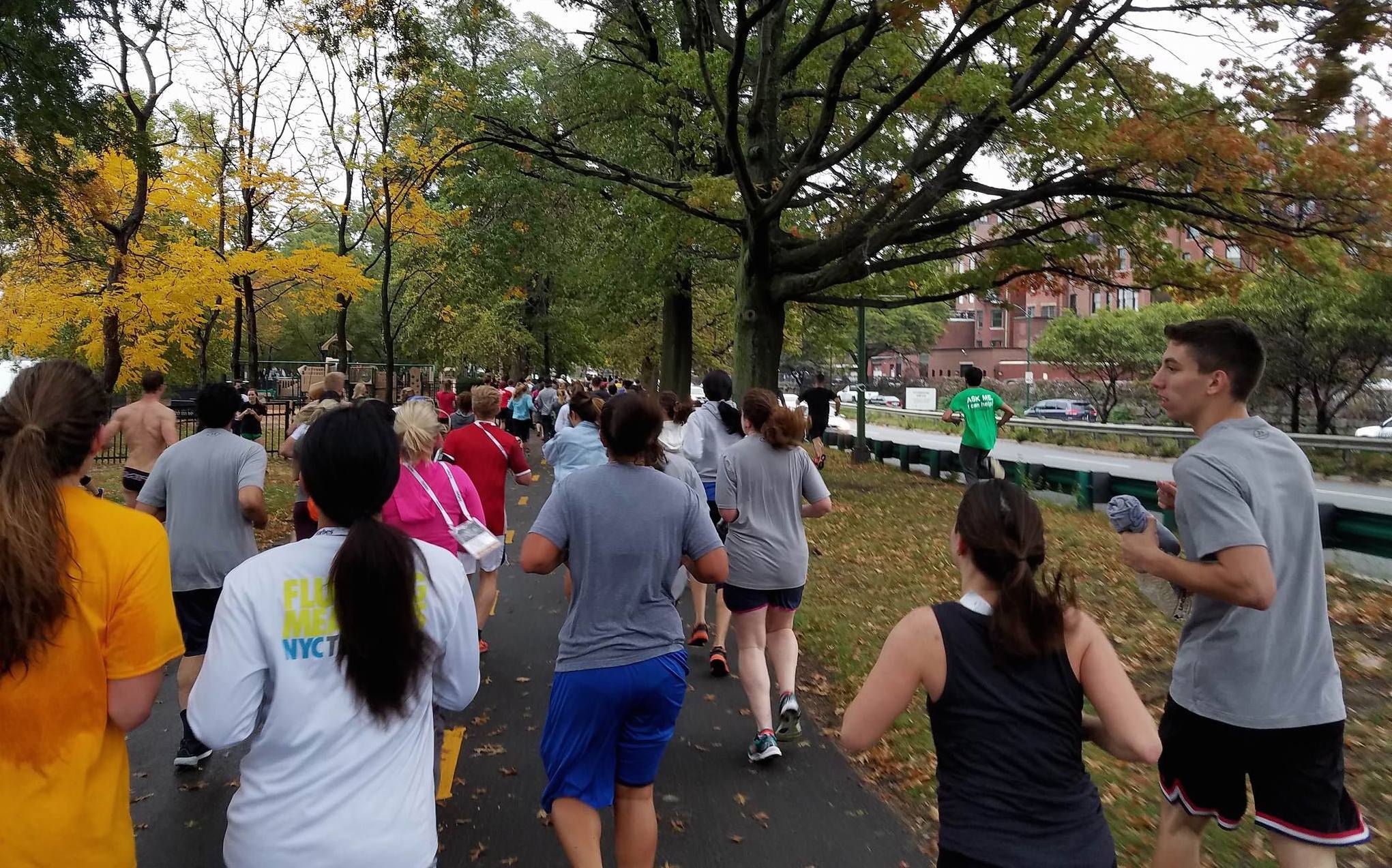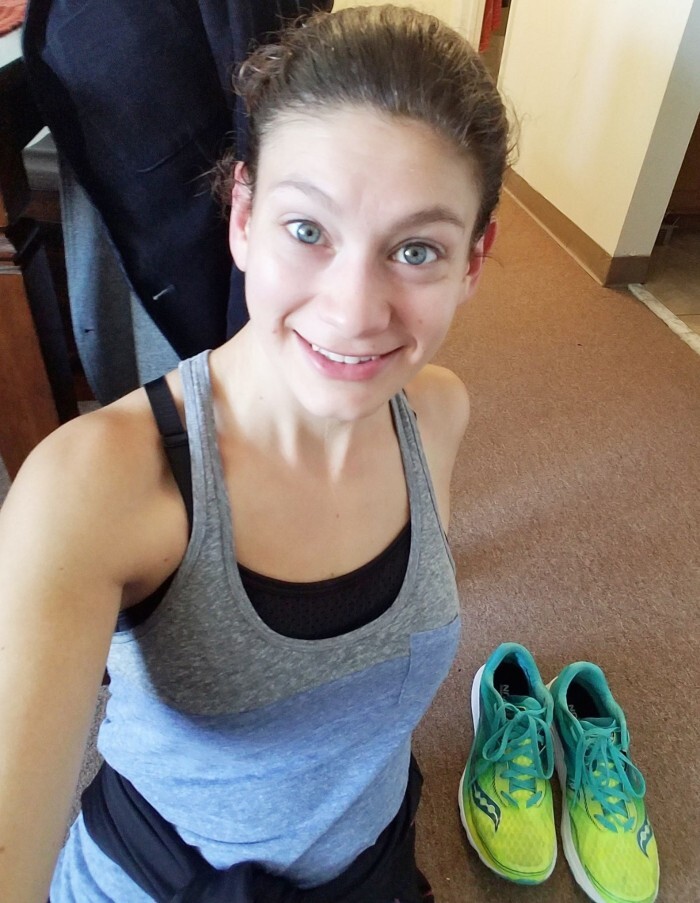
Ever wondered what it’s like to train for a marathon? Our blogger, Rachel Glum, invites you along for the ride as she takes on her second marathon. With just one month before the big day, Rachel talks running while sick, and offers tips on how to jumpstart long-run recovery.

With just one month left until the Philadelphia marathon, the nerves are starting to kick in. No matter how well you’ve trained, running a marathon is difficult, and my training has been far from perfect.
Since resuming running after my injury, I’ve noticed that the last few miles of each long run feel more difficult than they did before my injury. I’m still able to complete the runs and recover from them fairly quickly, but I’d be lying if I said it wasn’t taking everything I have to cover those final miles.
That being said, I have to give myself credit for staying committed with my training. Two weekends ago, I ran 17 miles, and this past weekend, I had 19 miles on the schedule. Unfortunately, I came down with a nasty cold on Friday night that knocked me out on Saturday. I woke up feeling slightly better on Sunday, so I ventured out to see if I could do my long run. At first, I just felt more sluggish than usual, but after about 11 miles, my energy was plummeting, my stomach felt off, and my body was telling me very clearly to stop. But I continued until I hit 15 miles, and then decided to call it quits.
At first, I felt disappointed in myself that I couldn’t complete 19 miles, but now that my cold has re-emerged with a vengeance, I’m shocked that I was even able to make it 15 miles while sick. I had 15 miles on the schedule for next weekend, so I can just lengthen it to 19 instead. Being flexible with your training plan is so important, but it can also be scary!
This training cycle has been fraught with challenges and obstacles, and I can only hope that this will make race day all the more rewarding.
Topic of the week: Long Run Recovery
The long run is the most important part of marathon training, but also the most difficult. I’ve come to accept that I will be tired after a long run, especially during the summer months when I’ve just spent over 2 hours in the hot sun. Simply accepting this fact has made it easier to deal with.
Now I try not to make plans for the first few hours after finishing a long run, so I have time to rest and, if possible, take a nap. I find it difficult to nap after running, but if you can, do it! This will make the rest of your day much more enjoyable.
But let’s back up a bit. Now that I’m towards the end of my second marathon training cycle, I’ve developed an immediate post-run routine that I feel helps jumpstart my recovery.
1. Stretch & foam roll
Once you finish your run, grab your water bottle and immediately start to stretch your tight muscles, while they are still warm. This probably won’t feel so great at first, but I promise it will help you feel a lot better afterwards. If certain muscles are particularly tight and difficult to stretch, foam roll those areas first. It’s up to you how much you stretch, but I find that the more stretching I do, the better I feel a few hours later, and into the next day.
If you have time, try stretching before you go to sleep as well. I find this helps me get more restful sleep.
2. Hydrate, hydrate, hydrate
While you’re stretching, drink water until you don’t feel thirsty anymore. That’s probably a no-brainer for most of you, but what you might not realize is how important it is to not just hydrate immediately after your run, but throughout the day as well.
Unless you drink a lot of water during your run, you will likely end your run mildly dehydrated. When you drink a lot of water all at once, there is only so much your body can absorb into the cells, so it’s important to consistently hydrate throughout the day to help restore the fluid balance in your body.
3. Have a snack
Many runners, including myself, don’t have much of an appetite for about an hour after finishing a long run. However, it’s important to try to eat a carb and protein-rich snack as soon after your run as possible, to start rebuilding your muscles and replenishing glycogen stores. If you can’t stomach solid food, try making a smoothie. Simply throw some frozen fruit, protein powder, greens, and liquid into a blender, and you’ve got a great recovery drink. If you can’t stomach a smoothie, try a sports drink or my favorite post-run treat, kombucha, to at least get some carbs and electrolytes into your system.
4. Take a shower
In the summer, I take a cold shower to help lower my body temperature and help reduce inflammation, but in the fall, it’s back to hot showers.
While I don’t personally do this, I’ve heard that ice baths are a fantastic way to ease post-run soreness and decrease inflammation as well.
5. Eat a meal
By now, you’re probably starting to get hungry. In fact, you will probably go from mildly hungry to absolutely starving in a matter of minutes.
Because this hunger can be so intense, it’s best if you can have a healthy, filling meal prepared ahead of time. I try to make sure that I’ve cooked enough during the week that by the time Saturday rolls around, my fridge is stocked with plenty of leftovers. If not, it’s too tempting to reach for what’s easy and fast, rather than what’s healthy.
6. Rest & relax
The best thing you can do for yourself now is to lay on the couch and be lazy. You’ve earned it! If your feet or any joints are swollen, now’s the time to ice those areas as well. Napping is the best way to recharge, but simply resting, even if you are awake, will help you recharge your energy for the rest of the day.
7. Be proud of yourself
There’s a fair amount of bad that comes with long runs—sore muscles, fatigue, crazy hunger. But there’s a lot of good too. For me, there is no better feeling than the post-long run endorphin rush. Take pride in your accomplishment, and revel in the happiness it brings you.


